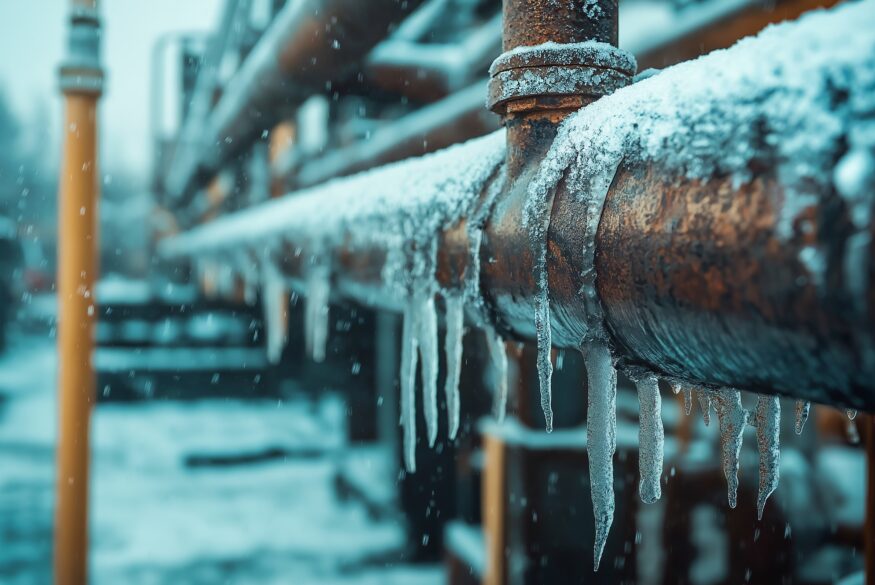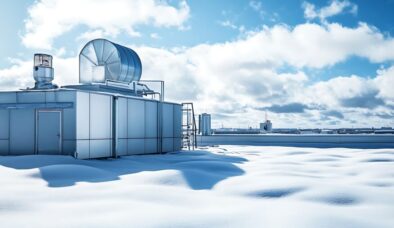The Cost of Rare Freezes: Building Financial Reserves for Winter Damage
When temperatures plunged across Texas in February 2021, the winter storm caused an estimated $30 billion in losses. Burst pipes flooded office towers, sprinkler systems failed, and HVAC units designed for mild winters broke down. Insurance carriers were overwhelmed, and many property owners discovered that their coverage fell short of actual damages.
Less than two years later, Winter Storm Elliott reinforced those lessons across 42 states. From December 21 to 26, 2022, record cold and high winds brought widespread power outages and frozen systems. Analysts estimate the storm cost the insurance industry more than $2 billion. Jim Robb, President and CEO of the North American Electric Reliability Corporation, later noted that the energy grid narrowly avoided a larger crisis. Had temperatures not risen on Christmas Day, natural gas service to major cities could have been disrupted. These events demonstrated that extreme cold threatens not only individual buildings but also the infrastructure they depend on.
Property managers in moderate climates face difficult financial choices. Ownership often demands lean operating budgets and strong returns, while rare freezes make it hard to justify major cold-weather investments. Equipment built for typical regional conditions performs reliably most of the time but lacks protection against extreme temperatures. Managers understand that unusual weather will eventually arrive, yet the pressure to control current expenses often outweighs preparation for future risks. The result is a portfolio vulnerable to sudden, severe weather that overwhelms systems and causes cascading failures across multiple buildings.
The Cost of Freeze Events
Repair bills are only part of the financial impact. When pipes burst, water damage quickly spreads through drywall, electrical systems, flooring, and tenant improvements. Delays in cleanup lead to mold, and flooding often affects multiple suites. Restoration contractors charge premium rates during crisis periods, and material shortages push costs even higher.
Lost income can exceed the cost of repairs. Tenants displaced by freeze damage may pause rent payments or terminate leases. Retail tenants lose seasonal sales, and professional offices can face compliance issues if their spaces become uninhabitable. These financial effects often last long after physical repairs are complete.
Freeze events can also reduce property value. Visible damage and a history of failures make buildings harder to lease or sell, while insurers may raise premiums or restrict coverage after claims. Deferred maintenance revealed by a freeze becomes a liability during due diligence, and a damaged reputation can linger long after the storm.
Insurance as Risk Transfer
Property insurance helps protect against freeze damage, but gaps in coverage are common. Most policies cover sudden damage from burst pipes or frozen equipment, but they may exclude losses caused by a lack of heat in vacant or closed buildings. Managers should review policy language carefully, document heat maintenance, and keep detailed records to support any claims.
Business interruption insurance extends protection to cover lost income during repairs, but most policies include a waiting period before coverage begins. Limits should be updated regularly to reflect current rents and tenant improvements. After recent freeze events, insurers serving moderate climates reassessed their exposure, leading to premium increases and more restrictive terms. Properties that could demonstrate winterization and maintenance protocols often secured better coverage and lower costs than those that could not.
Building Financial Reserves for Rare Events
Traditional capital reserves focus on predictable expenses such as roofs, elevators, and mechanical systems. They rarely account for weather-related damage that occurs outside normal replacement cycles. Properties in milder regions should establish supplemental reserves for rare but high-impact events.
Managers can model potential losses based on building vulnerabilities. A property with exposed piping might reserve funds to replace a portion of those systems. Older HVAC units may warrant an emergency replacement reserve in case of failure. The absence of past claims does not mean the risk does not exist.
Convincing ownership to fund reserves for low-probability events can be difficult, but clear comparisons help. A $10,000 investment in insulation can prevent over $100,000 in damage. Framing reserve funding as a form of self-insurance helps owners see it as a value-preserving measure rather than a discretionary expense. For properties unable to set aside cash reserves, maintaining an emergency line of credit or pre-negotiated service contracts can provide partial protection and priority response when demand spikes.
Prevention
Freeze protection investments rarely show immediate savings, but expected loss modeling highlights their value. If a freeze causing $200,000 in damage might occur once every 20 years, the expected annual loss is $10,000. Any prevention measure that costs less per year than that amount produces a positive return.
Insurance benefits further strengthen the case. A $50,000 upgrade that lowers annual premiums by $5,000 pays for itself in ten years, even without a freeze. Many improvements also improve energy efficiency, reducing heat loss in winter and cooling costs in summer.
Lessons from Texas and Elliott
The Texas and Elliott freezes offered several lessons for property professionals. Systems built for mild climates can fail quickly when temperatures fall below design expectations. Regional weather events strain contractors and suppliers, creating long repair delays and inflated costs. Large-scale freezes also reshape the insurance market, prompting carriers to raise premiums and tighten terms even for properties that avoided direct damage.
Capital Planning for Climate Resilience
Weather resilience should be integrated into long-term capital planning. A vulnerability assessment can identify exposed plumbing, unconditioned mechanical rooms, and weaknesses in the building envelope. When major systems reach replacement age, new equipment should be specified for a wider temperature range. The incremental cost during scheduled replacements is modest compared to emergency replacements during a crisis.
Owners may hesitate to invest in preventive measures if the risks feel abstract, but reframing the conversation around asset protection and tenant retention can help. Resilience supports value preservation, insurance access, and financing opportunities, connecting it to tangible business outcomes rather than distant climate forecasts.
Properties in regions with infrequent freezes face a choice: accept vulnerability to rare but costly events or invest in resilience that protects against future risks. Weather patterns are shifting, and unusual cold spells are no longer rare.
Effective management requires balance among financial reserves, insurance coverage, preventive measures, and long-term capital planning. The next deep freeze cannot be predicted, but preparation determines how a property performs when it arrives. The lesson from recent storms is clear: low probability does not mean low importance. Preparation today protects both the physical asset and its long-term financial stability.
To stay up to date on news and resources such as this and other topics of importance to the real estate industry, subscribe to the free CRE Insight Journal Newsletter using this link.
Comments are closed.









